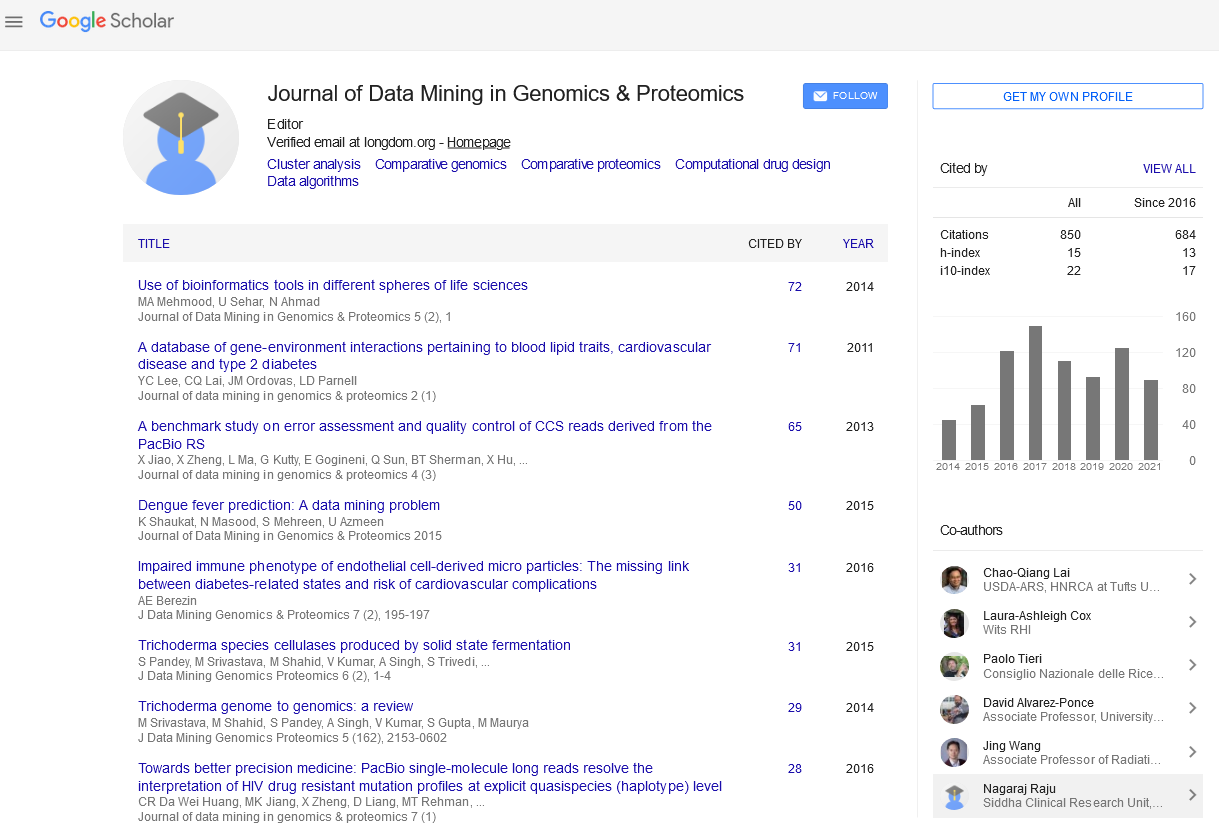PMC/PubMed Indexed Articles
Indexed In
- Academic Journals Database
- Open J Gate
- Genamics JournalSeek
- JournalTOCs
- ResearchBible
- Ulrich's Periodicals Directory
- Electronic Journals Library
- RefSeek
- Hamdard University
- EBSCO A-Z
- OCLC- WorldCat
- Scholarsteer
- SWB online catalog
- Virtual Library of Biology (vifabio)
- Publons
- MIAR
- Geneva Foundation for Medical Education and Research
- Euro Pub
- Google Scholar
Useful Links
Share This Page
Journal Flyer

Open Access Journals
- Agri and Aquaculture
- Biochemistry
- Bioinformatics & Systems Biology
- Business & Management
- Chemistry
- Clinical Sciences
- Engineering
- Food & Nutrition
- General Science
- Genetics & Molecular Biology
- Immunology & Microbiology
- Medical Sciences
- Neuroscience & Psychology
- Nursing & Health Care
- Pharmaceutical Sciences
Abstract
An Insightful Molecular Analysis Reveals Foreign Honeybees Among Algerian Honeybee Populations (Apis mellifera L.)
Mohamed Achou, WahidaLoucif-Ayad, Hélène Legout, Hayan Hmidan, Mohamed Alburaki and Lionel Garnery
This study assessed the genetic diversity of honeybees (Apis mellifera) in Algeria, in North Africa, using the molecular marker mtDNA COI-COII (Cytochrome Oxidase I and II). In total, five hundred eighty-two honeybee workers were sampled from 22 regions of the country. A PCR-RFLP (Polymerase Chain Reaction Restriction Fragment Length Polymorphism) analysis of the mtDNA samples distinguished the honeybee evolutionary lineages and mtDNA haplotypes from each region. Our data revealed the presence of three different honeybee lineages among the studied populations, comprising the African (A), North Mediterranean (C) and West Mediterranean (M) lineages. Eight different mtDNA haplotypes were recorded at various frequencies (A1, A2, A8, A9, A10, A13, C7 and M4). For the first time, our results identified a low genetic introgression (3.1%) of non-local mtDNA haplotypes (C7 and M4) among the local Algerian honeybees, most likely due to the import of foreign honeybees. Notably, the southern Algerian honeybee populations had lower haplotype diversity than the northern populations. Overall, the local North African honeybee subspecies A. m. intermissa and/or A. m.sahariensis seem to be remarkably dominant across northern Algeria.


